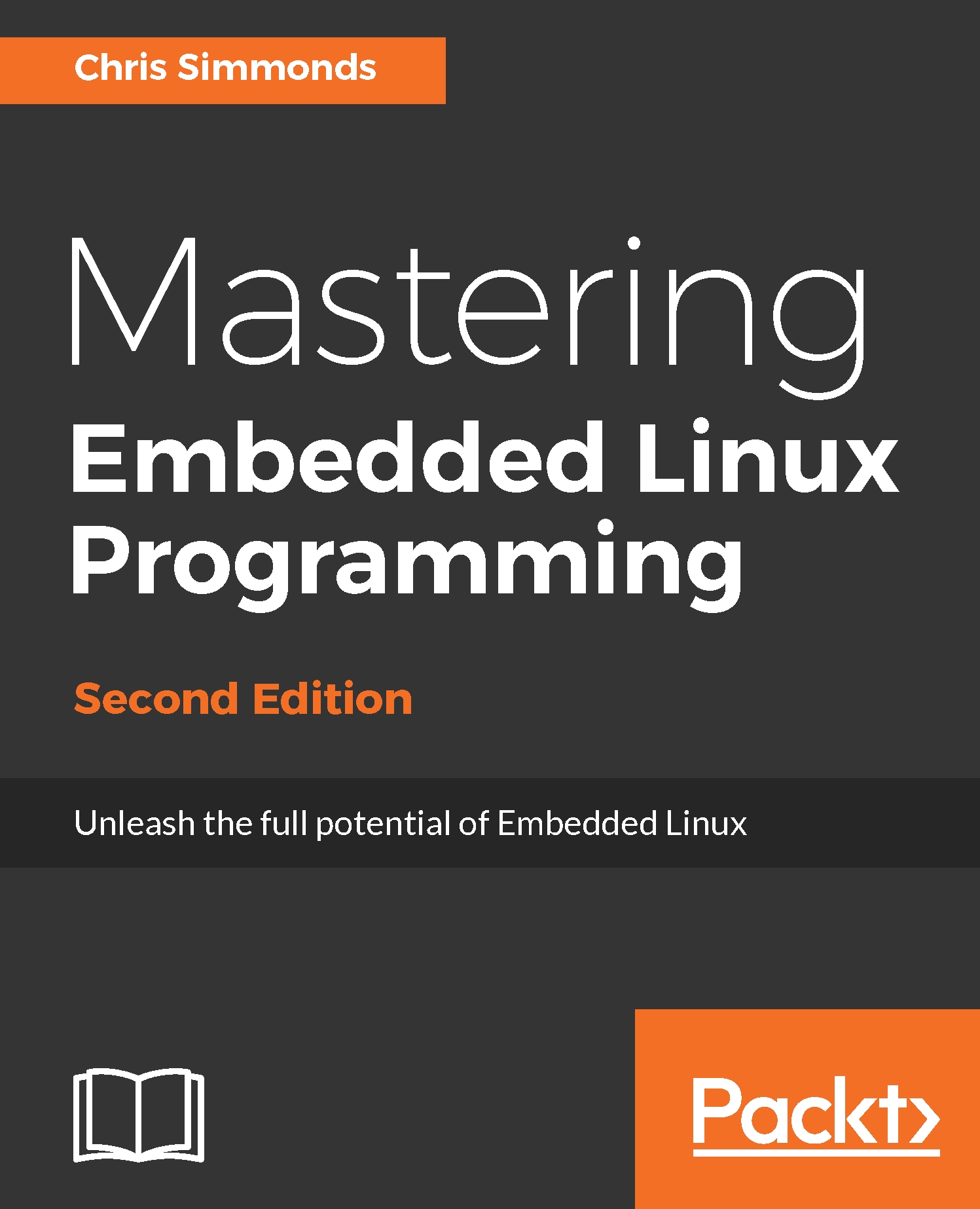If you are designing or selecting hardware for an embedded Linux project, what do you look out for?
Firstly, a CPU architecture that is supported by the kernel—unless you plan to add a new architecture yourself, of course! Looking at the source code for Linux 4.9, there are 31 architectures, each represented by a sub-directory in the arch/ directory. They are all 32- or 64-bit architectures, most with a memory management unit (MMU), but some without. The ones most often found in embedded devices are ARM, MIPS PowerPC, and X86, each in 32- and 64-bit variants, and all of which have memory management units.
Most of this book is written with this class of processor in mind. There is another group that doesn't have an MMU that runs a subset of Linux known as microcontroller Linux or uClinux. These processor architectures include ARC, Blackfin, MicroBlaze, and Nios. I will mention uClinux from time to time but I will not go into detail because it is a rather specialized topic.
Secondly, you will need a reasonable amount of RAM. 16 MiB is a good minimum, although it is quite possible to run Linux using half that. It is even possible to run Linux with 4 MiB if you are prepared to go to the trouble of optimizing every part of the system. It may even be possible to get lower, but there comes a point at which it is no longer Linux.
Thirdly, there is non-volatile storage, usually flash memory. 8 MiB is enough for a simple device such as a webcam or a simple router. As with RAM, you can create a workable Linux system with less storage if you really want to, but the lower you go, the harder it becomes. Linux has extensive support for flash storage devices, including raw NOR and NAND flash chips, and managed flash in the form of SD cards, eMMC chips, USB flash memory, and so on.
Fourthly, a debug port is very useful, most commonly an RS-232 serial port. It does not have to be fitted on production boards, but makes board bring-up, debugging, and development much easier.
Fifthly, you need some means of loading software when starting from scratch. A few years ago, boards would have been fitted with a Joint Test Action Group (JTAG) interface for this purpose, but modern SoCs have the ability to load boot code directly from removable media, especially SD and micro SD cards, or serial interfaces such as RS-232 or USB.
In addition to these basics, there are interfaces to the specific bits of hardware your device needs to get its job done. Mainline Linux comes with open source drivers for many thousands of different devices, and there are drivers (of variable quality) from the SoC manufacturer and from the OEMs of third-party chips that may be included in the design, but remember my comments on the commitment and ability of some manufacturers. As a developer of embedded devices, you will find that you spend quite a lot of time evaluating and adapting third-party code, if you have it, or liaising with the manufacturer if you don't. Finally, you will have to write the device support for interfaces that are unique to the device, or find someone to do it for you.



